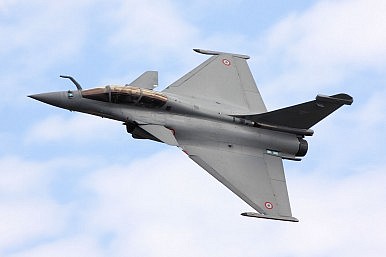By Aman Thakker
 The political discourse surrounding the deal underscores a need for India to rethink its defense acquisition processes.
The political discourse surrounding the deal underscores a need for India to rethink its defense acquisition processes.
On July 20, when the Narendra Modi-led National Democratic Alliance faced its first vote of no confidence, the president of the Indian National Congress, Rahul Gandhi, hit out against the government on a host of issues ranging from job creation to foreign policy. However, one criticism has garnered particular attention: the allegation that Modi had overpaid for the fighter jets when he purchased 36 “ready-to-fly” Rafale fighter jets, and that the deal included financial irregularities that have amounted to a “scam.”
While the government has defended the agreement as going beyond the original deal by bringing advanced weaponry such as the Meteor missile to India, and showcasing it as an example of Modi’s decisive leadership style, the opposition has suggested that the government grossly overpaid for the jets when compared to the deal negotiated by the Congress, and is purposefully keeping the price details confidential. However, despite the exchange attacks between the government and the opposition parties, the controversy underscores a deeper and systemic issue facing India’s acquisition of defense equipment, especially as India launches another tender for 110 jets.
The Rafale Deal: From 126 to 36 Jets
On August 28, 2007, the Manmohan Singh-led United Progressive Alliance government initiated the process to purchase 126 Medium Multi-Role Combat Aircrafts (MMRCAs) for the Indian Air Force (IAF), with a budget of $10.2 billion (42,000 crore Indian rupees, at an exchange rate of INR 40.97 to USD 1 based on historical data). Rafale was announced as the winner of the tender in January 2012. However, delays followed in concluding the deal well until 2014, when, following the general elections and change in government in 2014, the figure reported increased further. Indeed, when speaking to Doordarshan on April 13, 2015, then-Defense Minister Manohar Parrikar said that “The Rafale is quite expensive. As you go into the upper end, the cost goes up. When you talk of 126 aircraft, it becomes a purchase of about Rs 90,000 crore.” In U.S. dollars, that figure would amount to $14.4 billion (Rs. 90,000 crore at an exchange rate of INR 62.39 to USD 1 based on historical data).
As the deal continued to face delays, Modi took matters in his own hands. He made an announcement in his joint press conference with then-President of France Francois Hollande that India would purchase 36 ready-to-fly Rafale jets. The original MMRCA deal was later scrapped when Parrikar stated in the Rajya Sabha on July 31, 2015 that the tender for the 126 MMRCAs had been withdrawn. The deal for the 36 jets was concluded on September 23, 2016, where the deal was to purchase the jets at cost of 7.8 billion euros ($8.7 billion at an exchange rate of USD 1.12 to EUR 1 based on historical data).
The $8.7 billion figure was later confirmed by a “senior political leader in the National Democratic Alliance (NDA) held an off-the-record briefing in New Delhi for several journalists,” according to defense analyst Ajai Shukla. Although the government has not released the price it paid for the 36 Rafales, Shukla’s breakdown of the cost per plane showed that, when considering the “India-specific enhancements” for the jet, but not including other weapons, technology transfers, and spare parts, the figure is $155 million per plane. When compared to the price of the latest figure under the MMRCA deal as announced by then-Defense Minister Parrikar in April 2015 of $14.4 billion, the price per plane is much lower at $114 million.
A Broader Concern
However, despite the political back and forth on this increase in price (based on the information that is available) and the secrecy around the actual price, which have been at the core of Rahul Gandhi and the INC’s attacks on the Modi-led NDA, the ongoing Rafale controversy truly underscores the need for India to reform its processes on defense acquisitions.
Indeed, it is vexing that over the last 10 years, India has announced a tender for 126 MMRCAs, selected a vendor and negotiated a deal, then scrapped the tender in favor of fewer and more expensive jets from the same vendor, only to reinitiate a tender process for 110 jets this year. All this time, India’s Air Force, which should be operating at a strength of 42 squadrons, continues to operate well below at 31. That force is actually lower than when the Rafale was chosen as the winner of the tender in 2012, when India’s fighter squadron strength was at 37.
The lesson to be learned from the last 10 years of this process in acquiring the Rafale fighter jets is not about which government negotiated a cheaper deal, but rather that India desperately needs to improve the manner in which it conducts its acquisitions. This one-step-forward, two-steps-back approach is affecting India’s national security if it means that the IAF is depending on MiG-21s and MiG-27s well past retirement age.
As India’s political parties spar over the Rafale controversies, the broader concern of reforms to the defense acquisition process remains out of the conversation. As the government gears up for the next tender of 110 jets, all political parties, both within the government and in the opposition, should remember what is at stake, and focus on this crucial national security need.
No comments:
Post a Comment